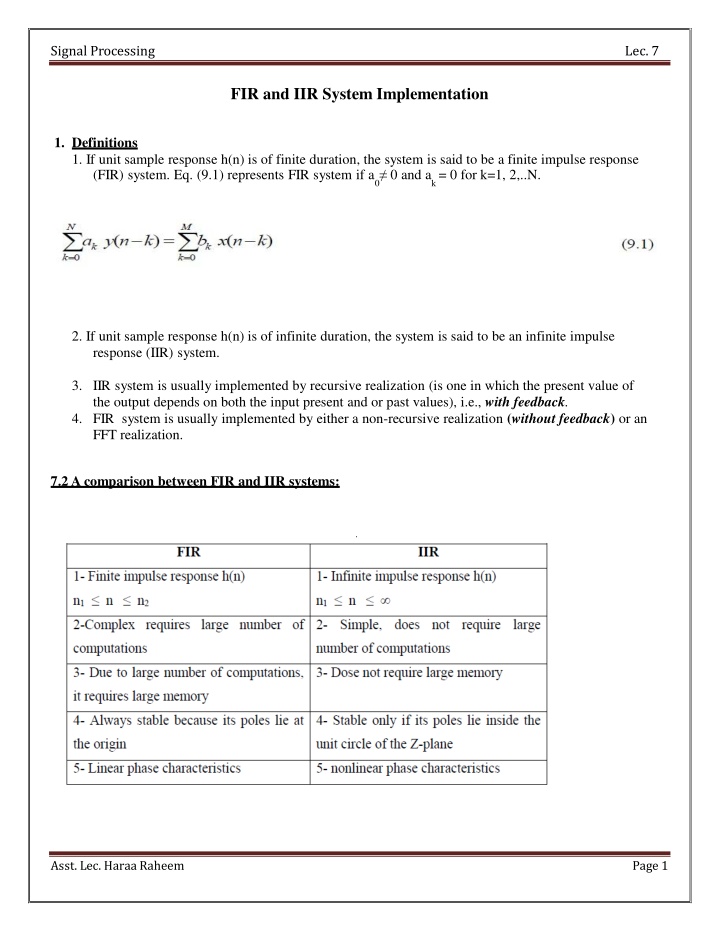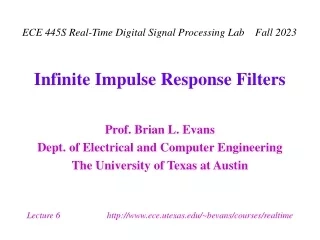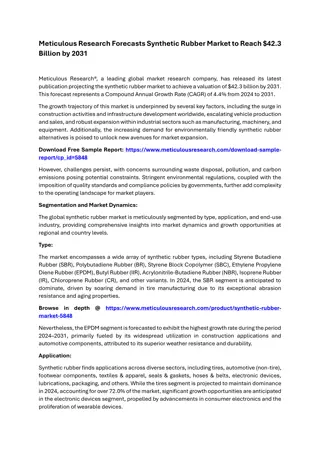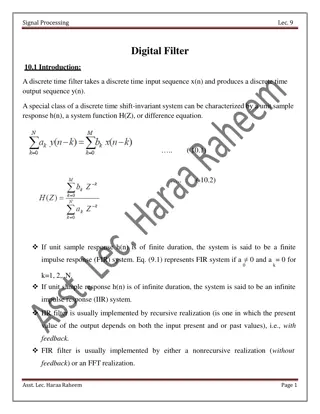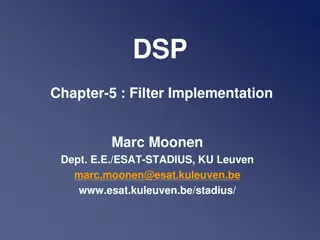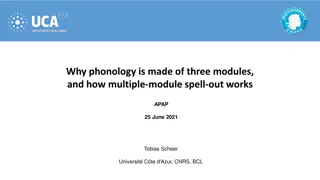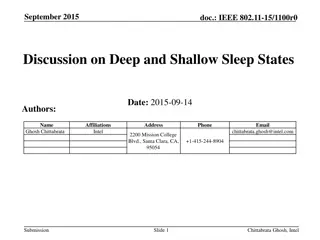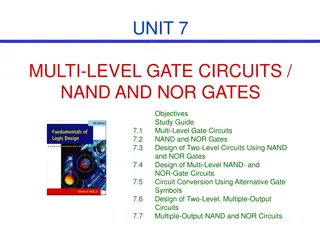FIR and IIR System Implementation: Definitions and Realizations
The concepts of Finite Impulse Response (FIR) and Infinite Impulse Response (IIR) systems in signal processing. Understand the difference between FIR and IIR, their implementations, difference equations, transfer functions, and realizations. Dive into direct form I and II realizations, cascade realization, parallel realization, and more.
Download Presentation

Please find below an Image/Link to download the presentation.
The content on the website is provided AS IS for your information and personal use only. It may not be sold, licensed, or shared on other websites without obtaining consent from the author.If you encounter any issues during the download, it is possible that the publisher has removed the file from their server.
You are allowed to download the files provided on this website for personal or commercial use, subject to the condition that they are used lawfully. All files are the property of their respective owners.
The content on the website is provided AS IS for your information and personal use only. It may not be sold, licensed, or shared on other websites without obtaining consent from the author.
E N D
Presentation Transcript
Signal Processing Lec. 7 FIR and IIR System Implementation 1. Definitions 1. If unit sample response h(n) is of finite duration, the system is said to be a finite impulse response (FIR) system. Eq. (9.1) represents FIR system if a 0 and a = 0 for k=1, 2,..N. 0 k 2. If unit sample response h(n) is of infinite duration, the system is said to be an infinite impulse response (IIR) system. 3. IIR system is usually implemented by recursive realization (is one in which the present value of the output depends on both the input present and or past values), i.e., with feedback. 4. FIR system is usually implemented by either a non-recursive realization (without feedback) or an FFT realization. 7.2 A comparison between FIR and IIR systems: Asst. Lec. Haraa Raheem Page 1
Signal Processing Lec. 7 7.3 Infinite Impulse Response (IIR) format An IIR is described using the difference equation (9.1) as: The IIR filter transfer function given in eq.(9.2) as: Example (1): Given the following IIR: y(n) = 0.2 x(n) + 0.4 x(n 1) + 0.5 y(n 1), Determine the transfer function, nonzero coefficients, and impulse response. Solution: 4. Realization of IIR systems Transfer function H(z) may be generally realized in the following forms: 1. Direct form I realization. 2. Direct form II realization. 3. Cascade realization. 4. Parallel realization. Asst. Lec. Haraa Raheem Page 2
Signal Processing Lec. 7 7.4.1 Direct-Form I Realization Transfer function H(z), is given by: Let x(n) and y(n) be the digital filter input and output, respectively. Taking z-transform: Y(Z) = H(Z) X(Z) Where X(z) and Y(z) are the z-transforms of x(n) and y(n), respectively. then Taking the inverse of the z-transform of Equation above, then: y(n) = b x(n) + b x(n 1)+ + b x(n M) a y(n 1) a y(n 2) a y(n N) 0 1 M 1 2 N This difference equation thus can be implemented by a direct-form I realization shown in Fig. (9.1A). Figure (9.1B) illustrates the realization of the second-order IIR (M = N = 2). Example (1): Given a second-order transfer function Asst. Lec. Haraa Raheem Page 3
Signal Processing Lec. 7 write the difference equations using: Direct form I s0l: To perform the realizations using the direct form I Where, a = 1.3, a = 0.36, b = 0.5, b = 0, and b = 0.5. Fig. shows the direct-form I realization . 1 2 0 1 2 The difference equation for the direct- form I realization is given by y(n) = 0.5 x(n) 0.5 x(n 2) 1.3 y(n-1) 0.36 y(n 2) 7.5 Realization of FIR A causal FIR is characterized by: The output is simply a weighted sum of present and past input values, as shown in Figure below Asst. Lec. Haraa Raheem Page 4
Signal Processing Lec. 7 H.W 1: Given the following difference equation, find the H(z) H.W2: Given the following difference equation, find the H(z) H.W3: Convert each of the following transfer functions into its difference equation: H.W4: Given the first-order IIR system realize H(z) and develop the difference equations using the direct-form I Asst. Lec. Haraa Raheem Page 5
